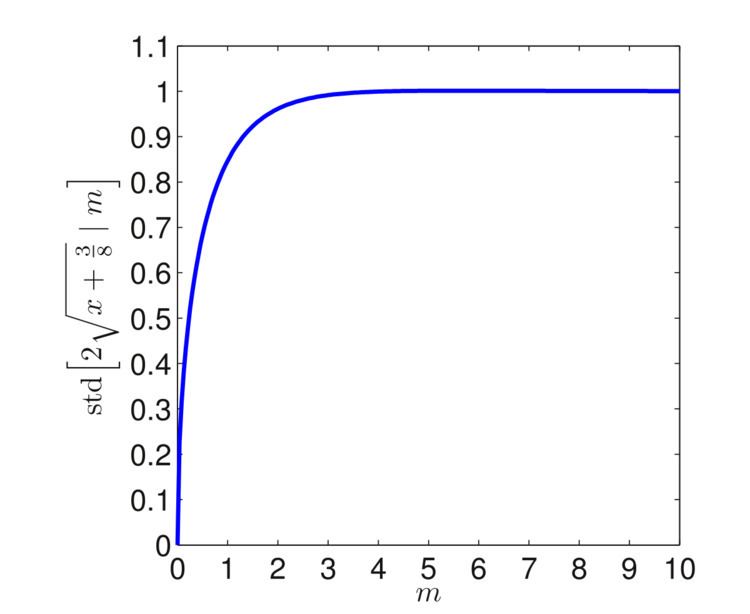 | ||
In statistics, the Anscombe transform, named after Francis Anscombe, is a variance-stabilizing transformation that transforms a random variable with a Poisson distribution into one with an approximately standard Gaussian distribution. The Anscombe transform is widely used in photon-limited imaging (astronomy, X-ray) where images naturally follow the Poisson law. The Anscombe transform is usually used to pre-process the data in order to make the standard deviation approximately constant. Then denoising algorithms designed for the framework of additive white Gaussian noise are used; the final estimate is then obtained by applying an inverse Anscombe transformation to the denoised data.
Contents
Definition
For the Poisson distribution the mean
aims at transforming the data so that the variance is set approximately 1 whatever the mean. It transforms Poissonian data
Inversion
When the Anscombe transform is used in denoising (i.e. when the goal is to obtain from
usually introduces undesired bias to the estimate of the mean
mitigates the issue of bias, but this is not the case in photon-limited imaging, for which the exact unbiased inverse given by the implicit mapping
should be used. A closed-form approximation of this exact unbiased inverse is
Alternatives
There are many other possible variance-stabilizing transformations for the Poisson distribution. Bar-Lev and Enis report a family of such transformations which includes the Anscombe transform. Another member of the family is the Freeman-Tukey transformation
A simplified transformation, obtained as the primitive of the reciprocal of the standard deviation of the data, is
which, while it is not quite so good at stabilizing the variance, has the advantage of being more easily understood.
Generalization
While the Anscombe transform is appropriate for pure Poisson data, in many applications the data presents also an additive Gaussian component. These cases are treated by a Generalized Anscombe transform and its asymptotically unbiased or exact unbiased inverses.
